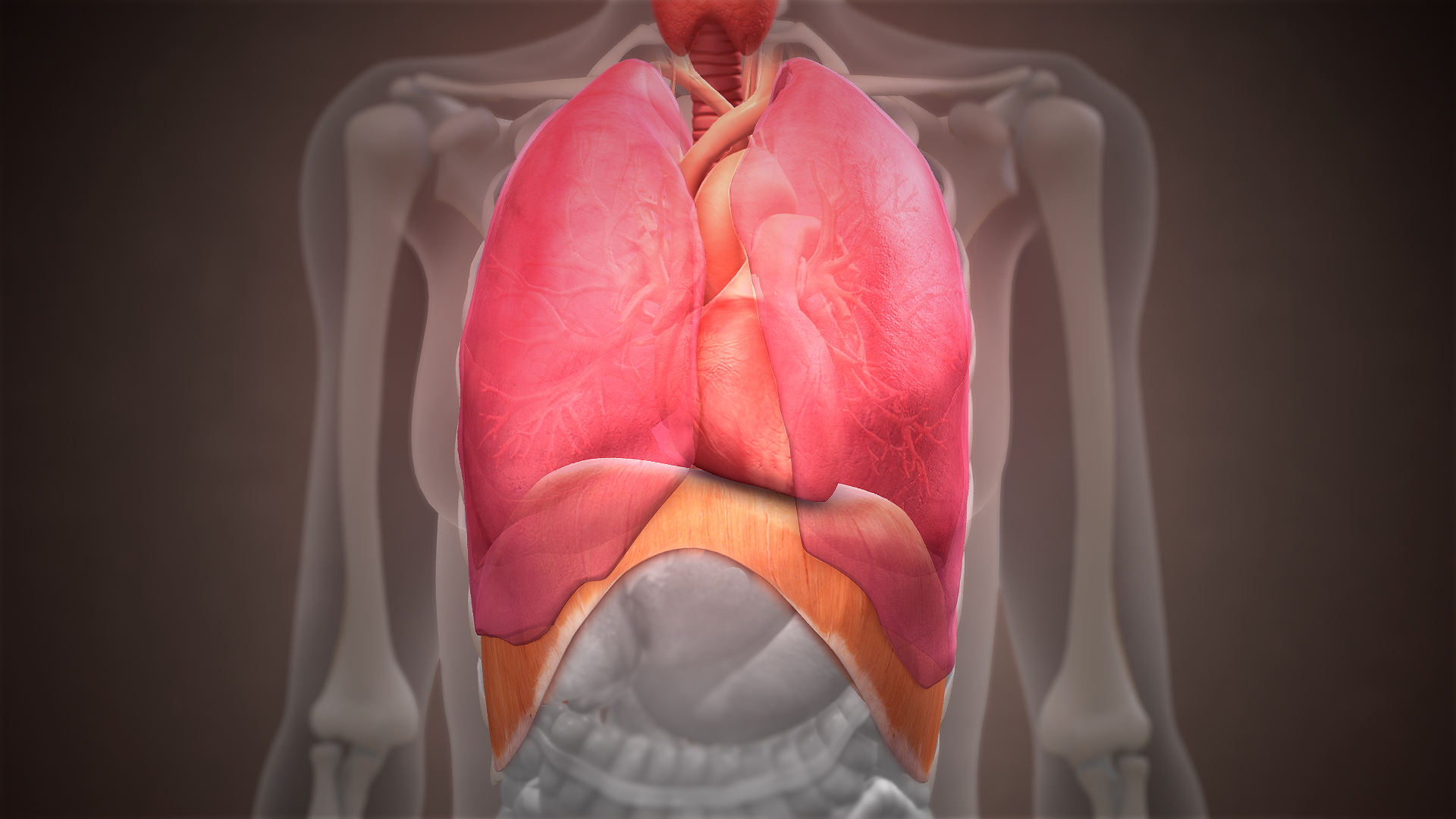|
Aerophagy
Aerophagia (or aerophagy) is a condition of excessive air swallowing, which goes to the stomach instead of the lungs. Aerophagia may also refer to an unusual condition where the primary symptom is excessive flatus (farting), belching (burping) is not present, and the actual mechanism by which air enters the gut is obscure or unknown. Aerophagia in psychiatry is sometimes attributed to nervousness or anxiety. Symptoms and signs Causes Aerophagia is associated with excessively chewing gum, smoking, drinking carbonated drinks, eating too quickly, as well as anxiety, high continuous positive airway pressure and wearing loose dentures. Aerophagia is also carried out deliberately as a voluntary action to increase the length and volume of a belch, as any air successfully swallowed serves to increase the partial pressure in the stomach and expand a burp. In people with cervical spinal blockages, inhaling can cause some air to enter the esophagus and stomach involuntarily. Diagnosis Ae ... [...More Info...] [...Related Items...] OR: [Wikipedia] [Google] [Baidu] |
Stomach
The stomach is a muscular, hollow organ in the upper gastrointestinal tract of Human, humans and many other animals, including several invertebrates. The Ancient Greek name for the stomach is ''gaster'' which is used as ''gastric'' in medical terms related to the stomach. The stomach has a dilated structure and functions as a vital organ in the digestive system. The stomach is involved in the gastric phase, gastric phase of digestion, following the cephalic phase in which the sight and smell of food and the act of chewing are stimuli. In the stomach a chemical breakdown of food takes place by means of secreted digestive enzymes and gastric acid. It also plays a role in regulating gut microbiota, influencing digestion and overall health. The stomach is located between the esophagus and the small intestine. The pyloric sphincter controls the passage of partially digested food (chyme) from the stomach into the duodenum, the first and shortest part of the small intestine, where p ... [...More Info...] [...Related Items...] OR: [Wikipedia] [Google] [Baidu] |
Smoking
Smoking is a practice in which a substance is combusted, and the resulting smoke is typically inhaled to be tasted and absorbed into the bloodstream of a person. Most commonly, the substance used is the dried leaves of the tobacco plant, which have been rolled with a small rectangle of paper into an elongated cylinder called a cigarette. Other forms of smoking include the use of a smoking pipe or a bong. Smoking is primarily practised as a route of administration for psychoactive chemicals because the active substances within the burnt dried plant leaves vaporize and can be airborne-delivered into the respiratory tract, where they are rapidly absorbed into the bloodstream of the lungs and then reach the central nervous system. In the case of tobacco smoking, these active substances are a mixture of aerosol particles that includes the pharmacologically active alkaloid nicotine, which stimulates the nicotinic acetylcholine receptors in the brain. Other notable active ... [...More Info...] [...Related Items...] OR: [Wikipedia] [Google] [Baidu] |
Thoracic Diaphragm
The thoracic diaphragm, or simply the diaphragm (; ), is a sheet of internal Skeletal striated muscle, skeletal muscle in humans and other mammals that extends across the bottom of the thoracic cavity. The diaphragm is the most important Muscles of respiration, muscle of respiration, and separates the thoracic cavity, containing the heart and lungs, from the abdominal cavity: as the diaphragm contracts, the volume of the thoracic cavity increases, creating a negative pressure there, which draws air into the lungs. Its high oxygen consumption is noted by the many mitochondria and capillaries present; more than in any other skeletal muscle. The term ''diaphragm'' in anatomy, created by Gerard of Cremona, can refer to other flat structures such as the urogenital diaphragm or Pelvic floor, pelvic diaphragm, but "the diaphragm" generally refers to the thoracic diaphragm. In humans, the diaphragm is slightly asymmetric—its right half is higher up (superior) to the left half, since th ... [...More Info...] [...Related Items...] OR: [Wikipedia] [Google] [Baidu] |
Stethoscope
The stethoscope is a medicine, medical device for auscultation, or listening to internal sounds of an animal or human body. It typically has a small disc-shaped resonator that is placed against the skin, with either one or two tubes connected to two earpieces. A stethoscope can be used to listen to the sounds made by the heart sounds, heart, lungs or intestines, as well as blood flow in artery, arteries and veins. In combination with a manual sphygmomanometer, it is commonly used when measuring blood pressure. It was invented in 1816 by René Laennec and the binaural version by Arthur Leared in 1851. Less commonly, "mechanic's stethoscopes", equipped with rod shaped chestpieces, are used to listen to internal sounds made by machines (for example, sounds and vibrations emitted by worn ball bearings), such as diagnosing a malfunctioning automobile engine by listening to the sounds of its internal parts. Stethoscopes can also be used to check scientific vacuum chambers for leaks an ... [...More Info...] [...Related Items...] OR: [Wikipedia] [Google] [Baidu] |
Anesthetic
An anesthetic (American English) or anaesthetic (British English; see spelling differences) is a drug used to induce anesthesia — in other words, to result in a temporary loss of sensation or awareness. They may be divided into two broad classes: general anesthetics, which result in a reversible loss of consciousness, and local anesthetics, which cause a reversible loss of sensation for a limited region of the body without necessarily affecting consciousness. A wide variety of drugs are used in modern anesthetic practice. Many are rarely used outside anesthesiology, but others are used commonly in various fields of healthcare. Combinations of anesthetics are sometimes used for their synergistic and additive therapeutic effects. Adverse effects, however, may also be increased. Anesthetics are distinct from analgesics, which block only sensation of painful stimuli. Analgesics are typically used in conjunction with anesthetics to control pre-, intra-, and postop ... [...More Info...] [...Related Items...] OR: [Wikipedia] [Google] [Baidu] |
Non-invasive Ventilation
Non-invasive ventilation (NIV) is the use of breathing support administered through a face mask, nasal mask, or a helmet. Air, usually with added oxygen, is given through the mask under positive pressure; generally the amount of pressure is alternated depending on whether someone is breathing in or out. It is termed "non-invasive" because it is delivered with a mask that is tightly fitted to the face or around the head, but without a need for tracheal intubation (a tube through the mouth into the windpipe). While there are similarities with regard to the interface, NIV is not the same as continuous positive airway pressure (CPAP), which applies a single level of positive airway pressure throughout the whole respiratory cycle; CPAP does not deliver ventilation but is occasionally used in conditions also treated with NIV. Non-invasive ventilation is used in acute respiratory failure caused by a number of medical conditions, most prominently chronic obstructive pulmonary disease ... [...More Info...] [...Related Items...] OR: [Wikipedia] [Google] [Baidu] |
Thorazine
Chlorpromazine (CPZ), marketed under the brand names Thorazine and Largactil among others, is an antipsychotic medication. It is primarily used to treat psychotic disorders such as schizophrenia. Other uses include the treatment of bipolar disorder, severe behavioral problems in children including those with attention deficit hyperactivity disorder, nausea and vomiting, anxiety before surgery, and hiccups that do not improve following other measures. It can be given orally (by mouth), by intramuscular injection (injection into a muscle), or intravenously (injection into a vein). Chlorpromazine is in the typical antipsychotic class, and, chemically, is one of the phenothiazines. Its mechanism of action is not entirely clear but is believed to be related to its ability as a dopamine antagonist. It has antiserotonergic and antihistaminergic properties. Common side effects include movement problems, sleepiness, dry mouth, low blood pressure upon standing, and increased we ... [...More Info...] [...Related Items...] OR: [Wikipedia] [Google] [Baidu] |
Medical News Today
''Medical News Today'' is a web-based outlet for medical information and news, targeted at both the general public and physicians. All posted content is available online (>250,000 articles as of January 2014), and the earliest available article dates from May 2003. The website was founded in 2003 by Alastair Hazell and Christian Nordqvist. It was acquired by Healthline Media in April 2016. The business office for the site is located in Brighton, East Sussex, and a second office is maintained near Manchester. it was the third most visited health site in the United States. As of October 2019, it had a global ranking by Alexa of 869 and a United States ranking of 440. Medical News Today uses artificial intelligence Artificial intelligence (AI) is the capability of computer, computational systems to perform tasks typically associated with human intelligence, such as learning, reasoning, problem-solving, perception, and decision-making. It is a field of re ... to assist in g ... [...More Info...] [...Related Items...] OR: [Wikipedia] [Google] [Baidu] |
International Foundation For Gastrointestinal Disorders
International is an adjective (also used as a noun) meaning "between nations". International may also refer to: Music Albums * ''International'' (Kevin Michael album), 2011 * ''International'' (New Order album), 2002 * ''International'' (The Three Degrees album), 1975 *''International'', 2018 album by L'Algérino Songs * The Internationale, the left-wing anthem * "International" (Chase & Status song), 2014 * "International", by Adventures in Stereo from ''Monomania'', 2000 * "International", by Brass Construction from ''Renegades'', 1984 * "International", by Thomas Leer from ''The Scale of Ten'', 1985 * "International", by Kevin Michael from ''International'' (Kevin Michael album), 2011 * "International", by McGuinness Flint from ''McGuinness Flint'', 1970 * "International", by Orchestral Manoeuvres in the Dark from '' Dazzle Ships'', 1983 * "International (Serious)", by Estelle from '' All of Me'', 2012 Politics * Internationalism (politics) * Political international, ... [...More Info...] [...Related Items...] OR: [Wikipedia] [Google] [Baidu] |
Partial Pressure
In a mixture of gases, each constituent gas has a partial pressure which is the notional pressure of that constituent gas as if it alone occupied the entire volume of the original mixture at the same temperature. The total pressure of an ideal gas mixture is the sum of the partial pressures of the gases in the mixture (Dalton's Law). In respiratory physiology, the partial pressure of a dissolved gas in liquid (such as oxygen in arterial blood) is also defined as the partial pressure of that gas as it would be undissolved in gas phase yet in equilibrium with the liquid. This concept is also known as blood gas tension. In this sense, the diffusion of a gas liquid is said to be driven by differences in partial pressure (not concentration). In chemistry and thermodynamics, this concept is generalized to non-ideal gases and instead called fugacity. The partial pressure of a gas is a measure of its Thermodynamic activity, thermodynamic activity. Gases dissolve, diffuse, and react accor ... [...More Info...] [...Related Items...] OR: [Wikipedia] [Google] [Baidu] |
Burping
Burping (also called belching and eructation) is the release of gas from the upper digestive tract (esophagus and stomach) of animals through the mouth. It is usually audible. In humans, burping can be caused by normal eating processes, or as a side effect of other medical conditions. There is a range of levels of social acceptance for burping: within certain contexts and cultures, burping is acceptable and may even be perceived as humorous, while in others it is seen as impolite or even offensive and therefore unacceptable. Humans are not the only animals that burp: it is very common among other mammals. In particular, burping by domesticated ruminants, such as cows or sheep, is a major contributor of methane emissions and may have a negative effect on the environment. Significant research is being done to find mitigation strategies for ruminant burping, e.g. modifying the animals' diets with '' Asparagopsis taxiformis'' (red seaweed). Causes *Burping is usually caused by ... [...More Info...] [...Related Items...] OR: [Wikipedia] [Google] [Baidu] |






